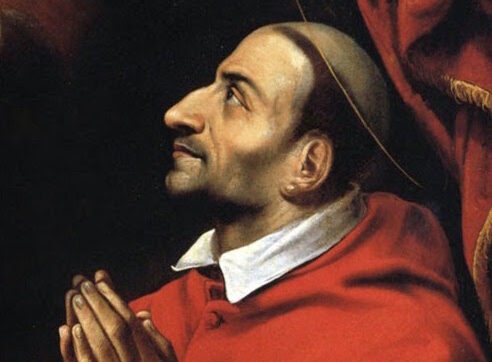It is not enough to write books and make speeches. The person must be the embodiment, the symbol of what he preaches.
Newsroom (November 5, 2021, 11:32 AM, Gaudium Press) Charles Borromeo was born in 1538. He was the nephew of the future Pope Pius IV.
On January 30, 1560, he became cardinal when he was still 21 years old. Three weeks later, he was named Secretary of State. From then on, the titles did not stop honoring him: Archbishop of Milan, Protector of Portugal and Lower Germany, Legate of Bologna, Protector of the Carmelites, of the Canons of Coimbra, of all the Franciscan Friars, of the Order of Christ, Archpriest of Santa Maria Maggiore, Major Penitentiary, among others.
A Council of Trent’s resolution established that bishops should live in their dioceses to govern them better. So, Saint Charles Borromeo, as archbishop, left for Milan where he would fight the enemies of the Church in the best way possible: through example!
In the Archdiocese of Milan
The archdiocese of Milan was huge. It covered Milan, parts of the Venetian territory, and the Swiss Alps. There were no less than fifteen suffragans under his jurisdiction!
By implementing all the conciliar norms, Charles Borromeo began to attract back to Catholicism those who had been scandalized by the bad habits of the clergy and had abandoned the true religion.
Even those who had been caught up in the flow of Protestant heresy began to admire him. Gradually, when they saw the holiness and exemplary life of this man of faith, they took upon themselves, with tears of repentance and contrition; the “soft yoke” and the “light burden” of Christ Jesus.
During the plague, an epidemic that occurred in 1576, people witnessed the most remarkable episodes in the life of this great apostle of example. Charles converted many people by the courage he showed in facing all the risks to minister the sacraments as, when, and where the faithful needed him.
The miracles in this period were also plentiful. They confirmed to the people that God was with him and that, therefore, St. Charles Borromeo was, by his integrity and his miracles, an unquestionable bearer of the truth.
Not to take away the writings, but…
One of the objectives of the Protestant Pseudo-Reformation was to exclude from the Holy Scriptures the books that did not interest them. Now, at this time, it was not a matter of excluding the writings but of practicing them. Whoever wanted to fight Protestantism had to firmly take all the teachings of Scripture and the Magisterium and live accordingly. Thus, the legislation imposed by the Council of Trent was to be practiced, especially by the bishops. Because, by their influence and power, they would make this new spirit of discipline penetrate the whole Church and the whole world.
The danger of the “Reforms”
After the Protestant Revolution, countless others followed, and even today, we find in various areas, even within the Church, movements that intend new “reforms.” In other words, to give a “new profile,” to detach from the Scriputres – to adapt old-fashioned customs, to open the Church to the world – or secularize the Church. It is still not clear exactly how; to open more doors to “culturizing,” to open windows to the influence of other religions, which means – let us not deceive ourselves – to open the arms to false doctrine and the heart to heresy.
The Church does not need this! Instead, it needs to open its soul and ears to Borromeos, Belarminos, and Teresas of the Cross.
By Cícero Leite
Compiled by Ena Alfaro




































